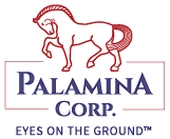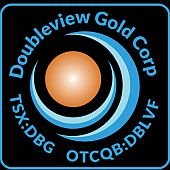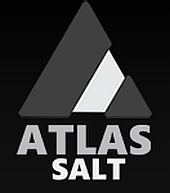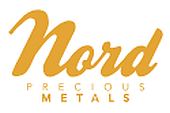 Alabama Graphite’s Ultra-PMG improves DCA by 194%
Alabama Graphite’s Ultra-PMG improves DCA by 194%
2017-09-21 09:03 ET – News Release
Mr. Donald Baxter reports
ALABAMA GRAPHITE RECEIVES POSITIVE EVALUATION RESULTS FOR ULTRA-PMG PRODUCT FROM RSRT TECHNOLOGIES; IMPROVED DYNAMIC CHARGE ACCEPTANCE (DCA) BY 194%
Alabama Graphite Corp. has provided positive evaluation results for its downstream high-purity, natural flake purified micronized graphite (PMG) product — marketed under the trade name Ultra-PMG, from RSR Technologies Inc. (RSRT), based in Dallas, Tex. RSRT is a leading research and development company focused on advancing lead-acid battery technologies. AGC’s ULTRA-PMG{A ™} was used as a leady-oxide additive for lead-acid batteries and was tested in 48 battery cells built by RSRT.
The most critical evaluation metric in RSRT’s analysis was battery-cell testing, which included micro-hybrid test (“MHT”), dynamic charge acceptance (“DCA”), Capacity (C20 and C), and breakdown analysis. When AGC’s ULTRA-PMG{A ™} was added to RSRT’s control, there was an improvement in capacity of 7%, from 87 to 93 mAh/mg. MHT improved 63% (from 8,000 to 13,000 cycles), and DCA increased more than 194% (from 0.17 to 0.50 A/Ah) with the addition of ULTRA-PMG{A ™}. When ULTRA-PMG{A ™} was added to RSRT’s SUPERSOFT-HYCYCLE{A ™} formulation {A —} RSRT’s top-of-the-line leady-oxide active material product {A —} there was negligible improvement in capacity; however, the already significant MHT test results improved 5%, from 42,000 cycles to 44,000 cycles. DCA increased 64% (from 0.55 to 0.90 A/Ah). ULTRA-PMG{A ™} prolonged cycle life approximately 4.5 times longer when compared to conventional leady oxide. RSRT’s MHT cycling test typically takes 45 days to complete; however, due to ULTRA-PMG’s significant cycle life increase, testing data took more than 200 days to acquire.
Dr. Matthew Raiford, RSRT’s Process Engineer, and supervisor of the evaluation, commented, “Alabama Graphite’s ULTRA-PMG{A ™} product outperformed all other standard commercially available carbon products we have tested, including carbon black. There are barely any impurities, and of the impurities none of them are even a remote concern for gassing in lead-acid batteries. This was the purest graphite product we have ever studied and analyzed {A —} by a significant margin.”
Lead-acid battery technology has existed for more than 150 years, is the oldest rechargeable battery electrochemistry technology, and still dominates the global energy storage market. There are more than 254 million cars and trucks in the United States alone, each containing at least one lead-acid battery. The industry continues to improve lead-acid battery technology. RSRT is working to enhance lead-acid battery performance by adding high-purity ULTRA-PMG{A ™} to the lead paste precursor to increase lead-acid battery performance.
AGC President and Chief Executive Officer, Donald Baxter, stated “We are very pleased with RSRT’s evaluation of our ULTRA-PMG{A ™} graphite product. ULTRA-PMG{A ™} is a byproduct of AGC’s Coated Spherical Purified Graphite (“CSPG”) production. The lead-acid battery market is an important, well-established multi-billion-dollar industry in the United States, and almost all of these batteries are manufactured in the USA. The lead-acid market represents an area of significant potential demand for AGC’s premium graphite products, as the industry now adds carbon into batteries’ negative active materials {A —} representing approximately 1% by weight or 11% by volume of the battery.
“AGC is actively engaging with several potential end users for our expected future battery-ready graphite products and intends to supply the American lead-acid battery industry with our U.S.-sourced-and-manufactured PMG graphite product,” said Mr. Baxter. “Although the lithium-ion battery market has the highest-growth rate, with significant forecasted demand for the foreseeable future, the lead-acid battery industry is currently the largest battery market, representing approximately a 90% share of the USD$65-billion battery market in 2016 (source: Avicenne Energy; 2017). Recent innovations in the lead-acid battery industry underscore the enduring potential of lead-based batteries to meet future energy market needs. We are pleased that our ULTRA-PMG{A ™} has demonstrated the potential to assist with continuing the advancement and optimization of this critical battery technology.”
AGC conveyed samples of various particle sizes of its ULTRA-PMG{A ™} to RSRT for characterization and evaluation. The first series of analytic testing determined elemental concentrations of impurities using inductively coupled plasma optical emission spectrometry (“ICP-OES”), which confirmed the ultra-high purity of AGC’s graphite. The AGC ULTRA-PMG{A ™} samples were introduced during the paste-making process, and studies were conducted at each phase. The battery testing and performance summaries for the battery cells, including MHT, DCA and Capacity, can be seen in Table 1 below. RSRT’s positive test results demonstrate when AGC’s ULTRA-PMG{A ™} is added to either a typical standard lead paste (control) or to RSRT’s proprietary SUPER-SOFT HYCYCLE{A ™} formulation, all performance metrics improve.
PERFORMANCE SUMMARY FOR BATTERY CELLS BUILT WITH AND WITHOUT AGC'S ULTRA-PMG
Dynamic
Capacity Microhybrid test charge acceptance Depth of
Product mAh/mg cycle life (A/Ah) 17.5% discharge (DoD)
Control 87 8,000 0.17 (2V) 1,000 (2V)
Control +3.8 microm AGC Ultra-PMG 93 13,000 0.50 (2V) 1,000 (2V)
RSRT Supersoft-Hycycle 114 42,000 0.55 (2V) 1,900 (2V)
RSRT Supersoft-Hycycle +3.8 microm
AGC Ultra-PMG 115 44,000 0.90 (2V) 1,900 (2V)
Test method BCI EN-50432-6 EN-50432-7 BCI
BCI: Battery Council International
EN: European standard
Note: mAh/mg = milliampere hour (mAh) per milligram (mg); A/Ah = amperes (A) per ampere hour (Ah) of battery capacity.
Micro-Hybrid Test or MHT evaluates the ability of a battery to provide the power to restart an engine after frequent stop phases, recovering state of charge (“SoC”) and aging effects due to shallow load pulses.
Dynamic Charge Acceptance or DCA is the ability of a battery to accept instantaneous energy during charging. The higher the DCA of a battery, the more the energy recovered and stored.
Depth of Discharge or DoD is used to describe how deeply the battery is discharged. If a battery is 100% fully charged, the DoD of the battery is 0%. If a battery has delivered 17.5% of its energy (meaning, 82.50% energy reserved), the DoD of the battery is 17.5%. If a battery is 100% empty, the DoD of the battery is 100%. DoD always can be treated as how much energy the battery delivered.
Most technical parameters of modern lead-acid batteries are now markedly enhanced or can be enhanced to match the requirements of automotive original equipment manufacturers (“OEMs”), including, improved DCA, reduced water loss at normal and elevated temperatures, higher cold-cranking power, extra-long cycle life at high-rate partial state of charge, and steady performance at elevated temperatures.
AGC’s natural flake graphite is sourced exclusively from the Company’s flagship Coosa Graphite Project property, located in Coosa County, Alabama, United States of America. AGC is 100% owner of the only advanced-stage graphite project in the contiguous USA and all requisite downstream secondary processing to manufacture AGC’s battery-ready graphite products is conducted in the contiguous USA. Although AGC’s proprietary, environmentally sustainable process to purify and produce battery-ready graphite is source agnostic, the Company’s secondary process flowsheet is being optimized for Coosa Graphite Project material.
Readers are cautioned that AGC is not yet in production and there is no guarantee that the Company will advance to full-scale production. If, following the completion of a Feasibility Study {A —} which has not yet been commenced {A —} AGC is able to advance the Coosa Graphite Project into production, the resulting graphite would be sourced from within the contiguous United States and the Company may have a potential competitive advantage over other producers of value-added graphite materials sourced from other countries, regardless of whether said materials were processed and/or manufactured in the United States of America.
QUALIFIED PERSON
Donald K. D. Baxter, P.Eng., President, Chief Executive Officer and Executive Director of Alabama Graphite Corp., is a Qualified Person as defined by National Instrument 43-101 (“N.I. 43-101”) guidelines, and has reviewed and approved the content of this news release. Mr. Baxter met with and worked RSRT in order to have reasonable confirmation that RSRT’s data was generated with the proper procedures and that the reported results have been accurately transcribed from the original sources and are suitable to be used.
RSR Technologies Inc. has reviewed and approved the content of this news release.
ABOUT ALABAMA GRAPHITE CORP.
Alabama Graphite Corp. is a Canadian-based flake graphite exploration and development company as well as an aspiring battery materials production and technology company. The Company operates through its wholly owned subsidiary, Alabama Graphite Company Inc. (a company registered in the state of Alabama ). With an advancing flake graphite project in the United States of America, Alabama Graphite Corp intends to become a reliable, long-term U.S. supplier of specialty high-purity graphite products. A highly experienced team leads the Company with more than 100 years of combined graphite mining, graphite processing, specialty graphite products and applications, and graphite sales experience. Alabama Graphite Corp. is focused on the exploration and development of its flagship Coosa Graphite Project in Coosa County, Alabama, and its Bama Mine Project in Chilton County, Alabama as well the research and development of its proprietary manufacturing and technological processing process of battery materials.
We seek Safe Harbor.
http://alabamagraphite.com/news-releases-2017/
































